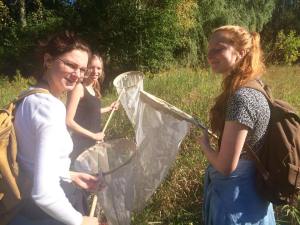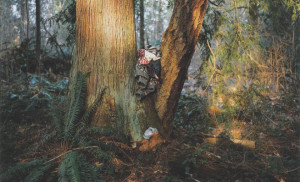Statement
Spider Pant Dialogues is a performance workshop that encourages illogical social activities to inspire an intrinsic experience between plant and human.
Performers gathered at a rental home in suburban Guelph, Ontario to participate in this workshop. Everyone was given an envelope containing instructions, and was then told to select a dialogue partner from a large pile of spider plants in the kitchen. Performers were encouraged to seclude themselves with their plant and get comfortable by nesting in pillows or stretching out on the floor. They were allowed to reorganize couches, benches, and chairs in ways that offered a private experience.
The envelopes contain a marker, two name tags for each performer, and index cards that instruct participants to perform four tasks:
- Read botanical facts to the plant
- Position, groom, and name the plant
- Practise soothing breathing exercises to exchange oxygen and carbon dioxide with the plant
- Partake in a casual conversation describing their surroundings and feelings to the plant
This work is influenced by John Baldessari’s 1972 performance Teaching a Plant the Alphabet. His piece is described as an exercise in futility, which to me can cause a sort of unexpected idyllic experience, especially when the work is related to plants or naturalism. I wanted to perform a direct response to Baldessari’s Teaching a Plant the Alphabet because he completed his performance as a response to Joseph Beuy’s 1965 performance How to Explain Pictures to a Dead Hare. These artworks are influential because they encourage viewers to consider logic, but to also to look past logic to gain a more innate understanding of the work.
At the end of the piece, I asked all performers to fill out a brief questionnaire about their affiliations with fine and conceptual art, their interest in plants, and what their thoughts were on this workshop. Overall I would say that this workshop was a success. I discovered that Spider Plant Dialogues was the first conceptual art experience for many participants. I am pleased to have hosted a performance piece with individuals of many backgrounds and fields of study. -M






























































You must be logged in to post a comment.